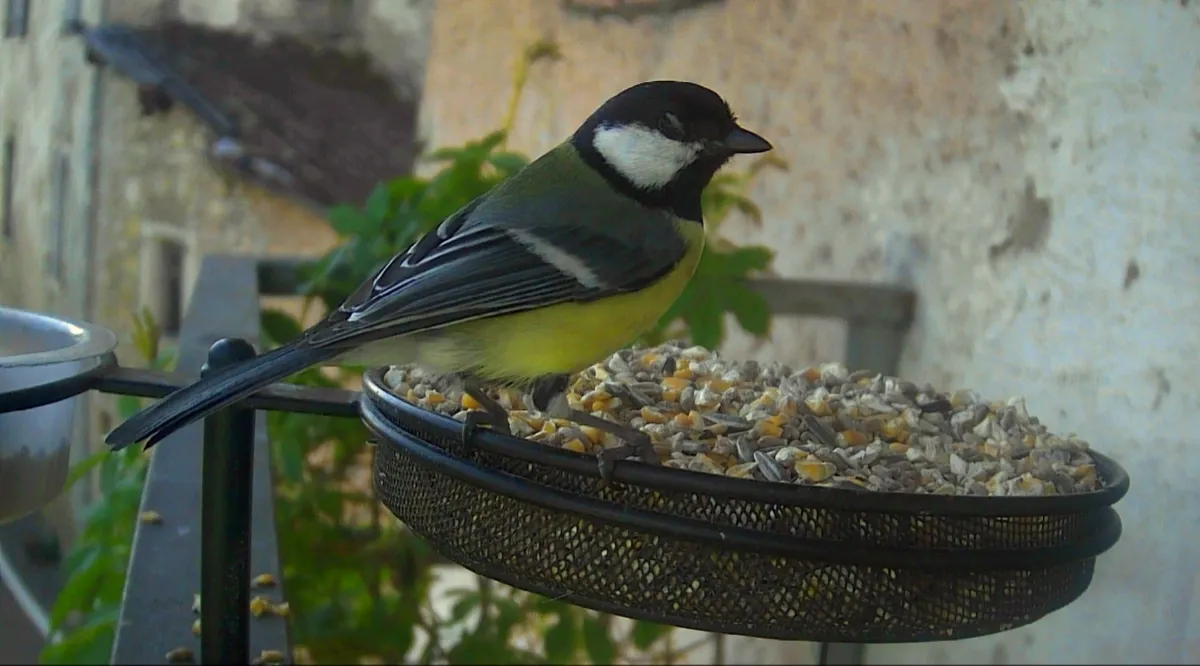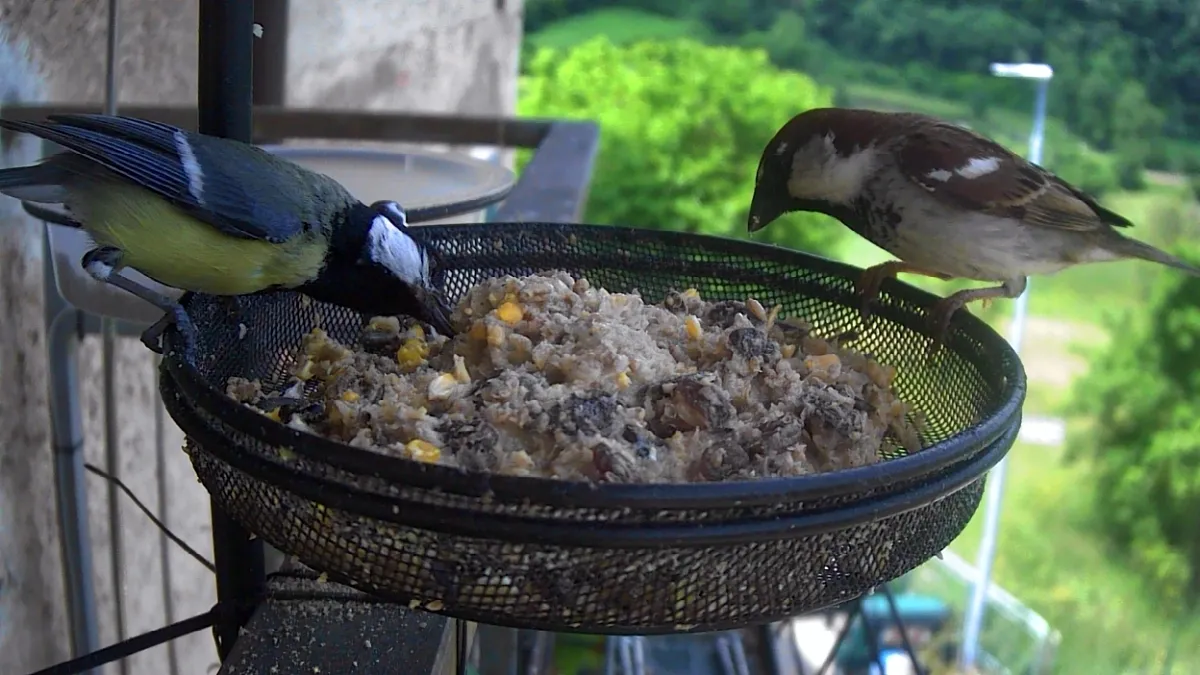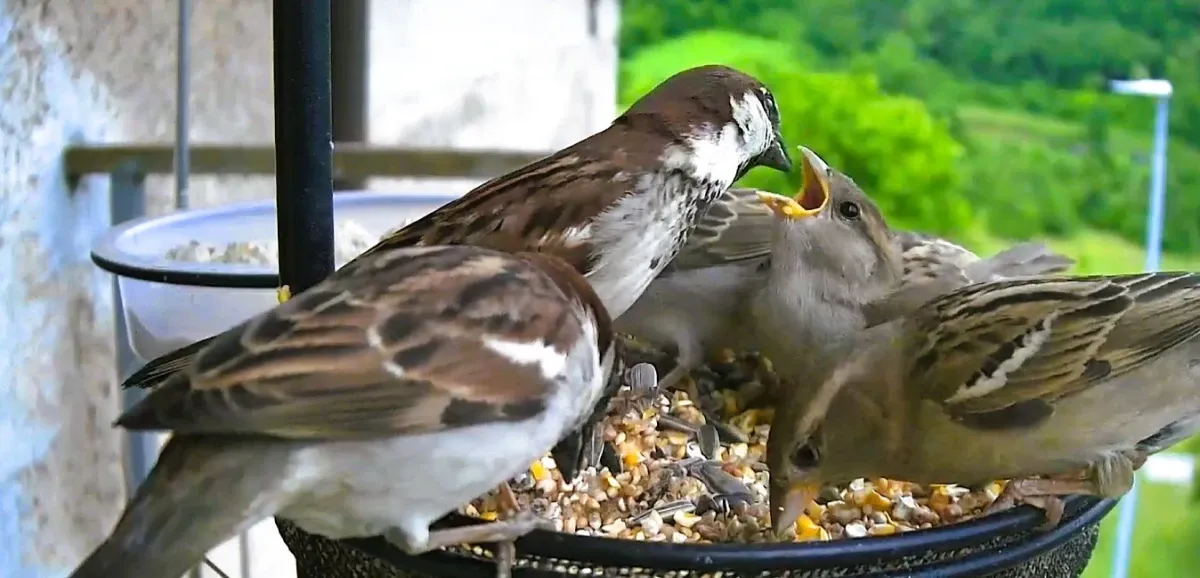Birdfeeder Wars: Four Minutes of Mostly Great Tits and the Rise of the Sparrows

The Installation: A Moment of Naive Optimism
When I first installed my bird feeder on the balcony here in the Italian Alps, I had this lovely, Disney-esque vision of a peaceful community of birds politely taking turns and perhaps even forming cute little queues. How wonderfully civilised it would be, I thought, watching nature's harmony unfold with my morning coffee.
What I got instead was something closer to a David Attenborough documentary about territorial warfare.
The Great Tit Occupation
The Great Tits rolled in like they owned the place. They were the feathered mafia of my balcony — bold, loud, and incredibly pushy. Within hours of hanging the feeder, they'd established a protection racket that would have impressed the Corleones.
These birds have no concept of sharing. Zero. They'd perch on the feeder like bouncers at an exclusive nightclub, wings spread wide to claim maximum real estate, systematically working through the seeds while giving death stares to any smaller bird that dared approach.
The sparrows? Poor bastards. They tried. They'd flutter in timidly, grab a seed or two, looking over their shoulders like they were stealing from the corner shop. Then boom: Great Tit drops from the sky like a feathery linebacker and chaos ensues. The sparrow would scatter in a flurry of panicked chirping, probably questioning all their life choices.
Total feeder domination for about a week. It was Tit City.

Face off between a Great Tit and an Italian Sparrow - The mess in the feeder is my home made fat balls. They look like shit but the birds love them.
The Sparrow Revolution
BUT OH, HOW THE TABLES HAVE TURNED.
I'm not sure exactly when it happened, but the sparrows have unionized. They must have held secret meetings in the olive trees, developed tactics, maybe even elected shop stewards. Because now they mob the feeder in tight squads, chirping like they're starting a turf war.
It's like West Side Story, but with more feathers and less choreography. Instead of snapping fingers and doing jazz hands, they've got synchronized swooping and coordinated seed-grabbing maneuvers.
The transformation was remarkable to watch. Where once a single Great Tit could terrorise one or two sparrows, now six or seven sparrows will descend simultaneously, claiming every available perch and effectively surrounding any would-be Great Tit intruder.
The Great Tits still show up, but now they get side-eyed hard and sometimes pecked off the perch like "not today, big bird." The power dynamic has completely flipped. David has not only beaten Goliath, he's recruited five of his mates and formed a proper militia.

These are Italian sparrows, which, according to iNaturalist, are vulnerable and in rapid decline. Good to see they're fighting back, at least at my feeder.
The Ongoing Conflict
What fascinates me is how both species have adapted their strategies. The Great Tits, realizing they can no longer rely on brute intimidation, have become more cunning. They'll wait for the sparrow squad to get distracted and then make lightning raids, grabbing as many seeds as possible before retreating.
The sparrows, meanwhile, have developed what I can only describe as a buddy system. There's always at least one acting as a lookout while the others feed. When danger approaches (usually in the form of an incoming Great Tit), the sentinel gives a warning call that sends the whole group into defensive formation.
It's like watching a miniature military exercise play out on my balcony every morning.
Great Tit Intelligence Report
Fun facts about Great Tits (the birds, behave yourself):
- Great Tits are the largest tit species in Europe (yes, really). This gives them a significant size advantage in feeder politics.
- They can mimic sounds, including other birds and even mechanical noises. Possibly useful for psychological warfare.
- They're known for being aggressive at feeders, basically the bird equivalent of queue jumpers who also happen to be built like rugby players.
- Despite their bullying behaviour at my feeder, they're actually excellent parents, fiercely protective of their young. Family values, apparently, don't extend to feeder etiquette.
- And yes, ornithologists named them "Great Tits" completely seriously. Nature has a sense of humor, and so did Victorian bird enthusiasts, apparently.
The Entertainment Value
The daily drama has become better than anything on television. I've started timing my coffee breaks to coincide with peak feeding hours, which seem to be around 8 AM and 4 PM. The sparrows have clearly worked out my schedule too, because they're always ready for the show.
So yes, enjoy four minutes of Great Tits and their ongoing territorial disputes with the sparrow collective. Bring popcorn, it's basically a tiny avian soap opera out there, complete with betrayals, alliances, and the occasional dramatic chase scene through the olive branches.
Who needs Netflix when you've got bird politics?
Small print: The author may have taken certain creative liberties with geographical flora, military terminology, and the actual intelligence levels of small birds. Any resemblance to real olive trees (which don't grow here), actual organised sparrow militias, or legitimate ornithological research is purely coincidental. No Great Tits were psychologically harmed during the writing of this piece.